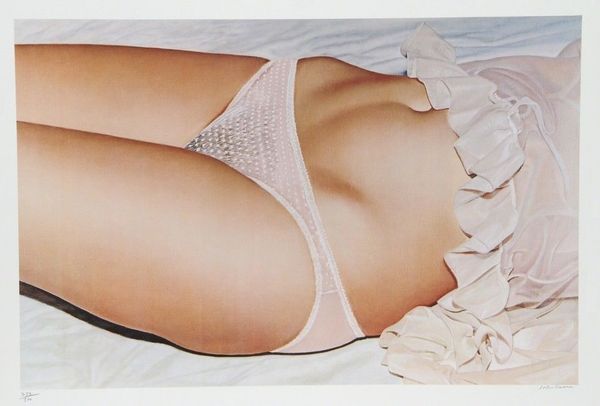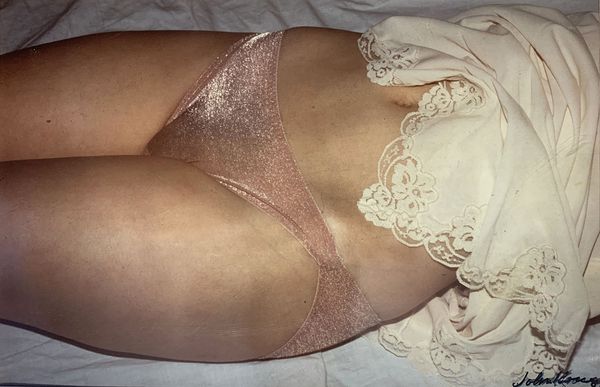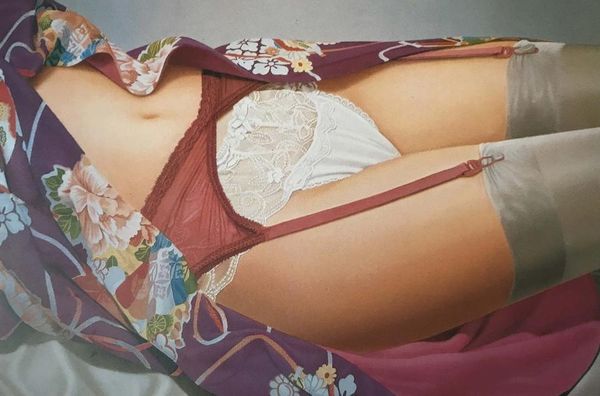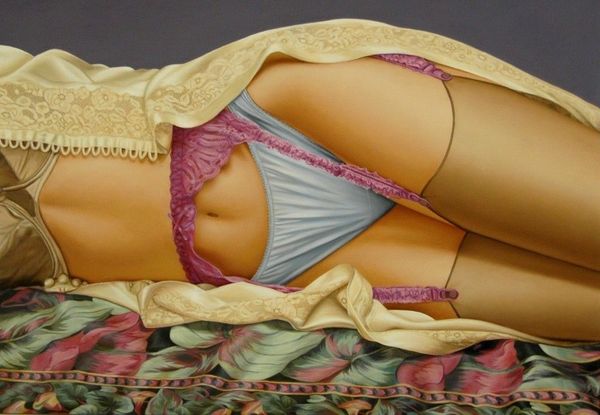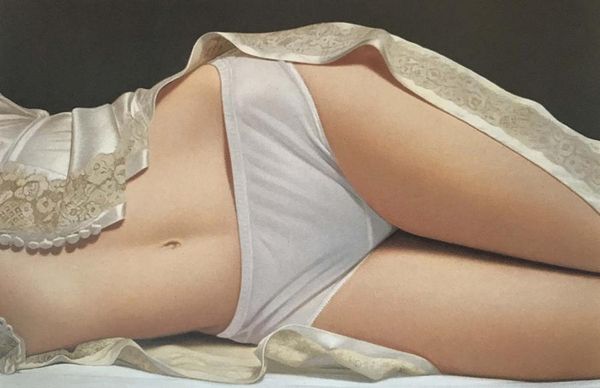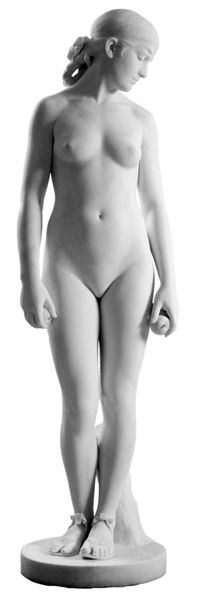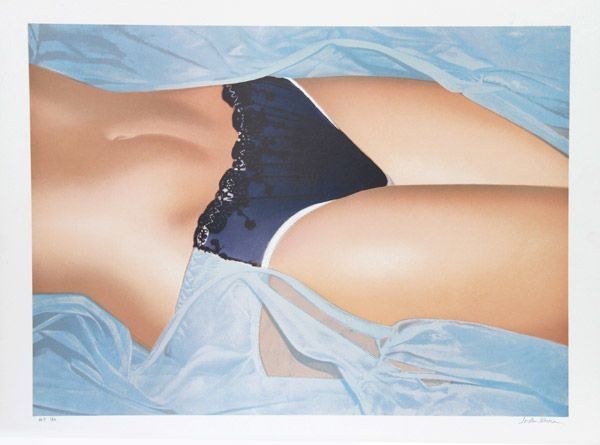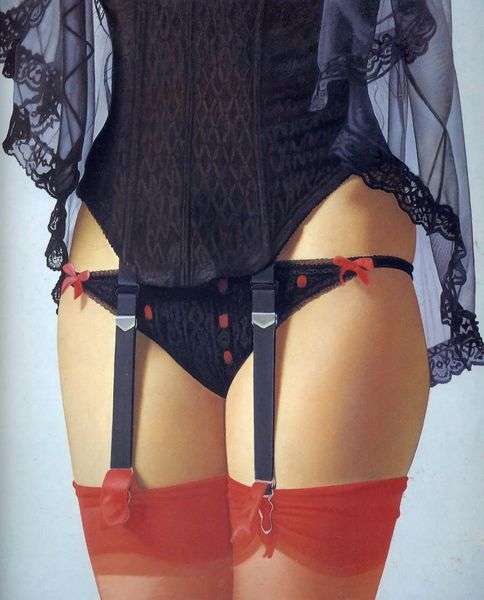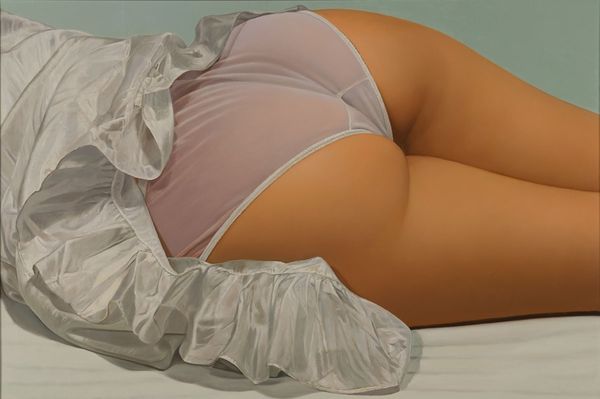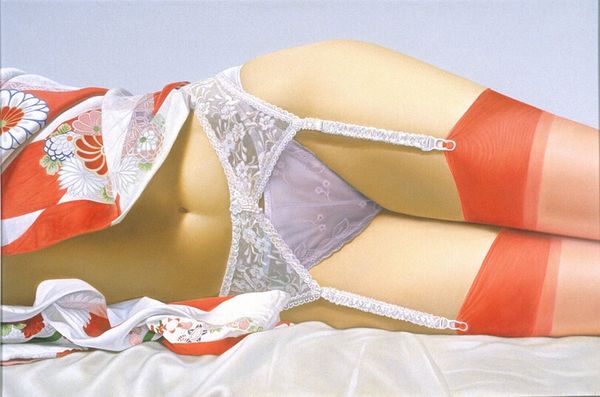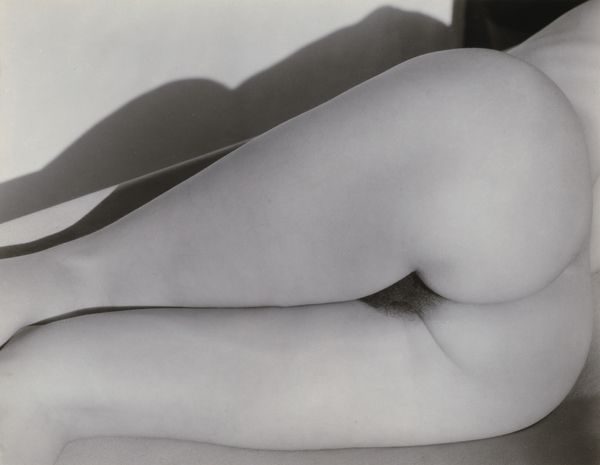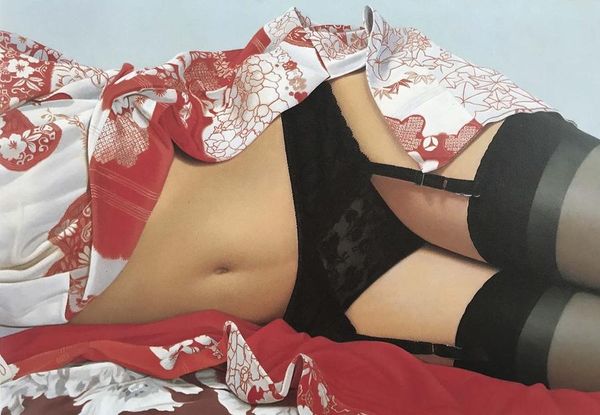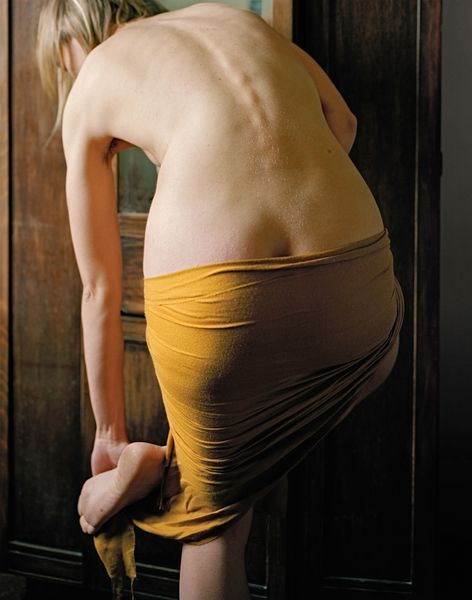
painting, oil-paint
#
painting
#
oil-paint
#
figuration
#
nude
#
erotic-art
#
realism
Copyright: John Kacere,Fair Use
Curator: So, here we have John Kacere's "Reina," an oil painting from 1979. It's a close-up section of a female figure, cropped just below the waist, focusing intently on the curves and soft fabric. Editor: My first impression? It's so...silky! The way he renders that peach-colored lingerie and the sheet beneath... it's almost tactile. You just want to reach out and touch it. Though I guess you're not supposed to do that in a museum, huh? Curator: Absolutely, the painting demonstrates a photorealist style characteristic of Kacere’s wider practice. What’s fascinating is its participation in dialogues around voyeurism and objectification prevalent in art history. It presents questions concerning the female body and spectatorship in fine art. Editor: Voyeurism, sure. I can see that. But there's something kind of sweet, too, maybe because of the white bow and the pastels. It reminds me of those old Hollywood glamour shots but, like, dialed way down. Curator: Well, those glamorous images and associated gazes perpetuated specific beauty standards that objectified women's bodies, and we can view Kacere’s hyperreal depictions in that context, particularly when considered through a feminist lens. The partial view creates anonymity. Editor: Hmm, interesting perspective. It also isolates a small area and transforms it, focusing on details others might miss and emphasizing those simple forms to elevate it beyond being suggestive to being artful. It could almost be any landscape. Curator: The framing isolates and, in doing so, arguably shifts the meaning to aesthetic form—we can think about how debates of aesthetic versus erotic have played out, especially regarding figuration in the visual arts. Editor: See, that's the brilliance. He takes a potentially charged image and transforms it into something serene and delicate, makes you appreciate the curve of a hip the way you would appreciate a sunset. He captures the quality of flesh, the slight creasing where the body bends. You begin to contemplate all those little overlooked details that comprise a real human, without the pressure of "perfection." Curator: These kinds of observations remind us to acknowledge the intricate relationship between art, society, and politics and consider whose gaze is privileged in visual culture and why. Editor: Right, because art can either perpetuate harmful ideologies or encourage critical thinking, right? Thanks for making me see this piece with a whole new perspective. It will keep me thinking.
Comments
No comments
Be the first to comment and join the conversation on the ultimate creative platform.
